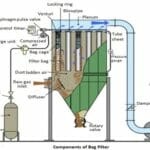- Webinar No: WBNR 1137
- PDH Units: 2
No data found for Custom Course Number
No data found for Custom Course Units
Intended Audience: All Engineers
Credits: 2 PDH Units
When: Thursday 7/31. 10 - 12 pm EDT
The overall purpose of this webinar is to introduce engineers and architects to the challenges to the climate change problem best suited for solution by architects and engineers. It focuses on the origins of present greenhouse gas emissions and how to cost-effectively replace these sources with clean sources.
After a short introduction to some of the lesser-known results of global climate change, along with a summary of the Earth’s sophisticated heat balancing system, solution scenarios are developed and analyzed to show what can be achieved by 2030 as well as an analysis of the projected economic impact of NOT going green. Private sector as well as government actions needed are discussed.
Specific actions discussed include transportation electrification, the role of energy storage, zero energy buildings, trade-offs between efficiency and renewable generation and simulation of energy production and use.
Date: Thursday. July 31. 2025. Starts: 10 - 12 pm EDT
Credits: 2 PDH Units
Learning Objectives
Upon completion of the course, the student should understand:- What’s going on out there?
- How serious is it?
- What are the scientific facts?
- Can anything be done about it?
- How much will it cost?
- Examples of Cost-effective, Greener buildings as part of the solution.
- Examples of Cost-effective, Greener transportation as part of the solution.
- Examples of Greener government as part of the solution.
- Examples of Greener ethics as part of the solution.
Special Webinar Instructions
After payment, please visit this webinar page, click "Start Course" and fill out the Webinar Registration Form. You'll receive email notification and details on how to join the webinar. You will then be able to access the webinar slides, test your system and receive webinar reminders. After completing the webinar requirements, your certificate of completion will be saved and available for download in your profile.
We value your feedback! Please rate this webinar after completion.
Group Discounts Available
Course Reviews
4.1
- 5 stars17
- 4 stars12
- 3 stars6
- 2 stars2
- 1 stars1
Once completed, your order and certificate of completion will be available in your profile when you’re logged in to the site.











Excellent, and eye-opening.
One or two quiz questions should be reviewed for more clarity and fit with the presentation.
I only would have wanted more discussion of the engineering of solutions in practice
Some of the numbers need better explanation. Question 10 in quiz confusing.
Good summary of present day progress for transition from fossil fuels to renewables
Slides were very clear and thought provocing.
Excellent course topic, slides, and presentation.
This course was perfect for engineers–the professor made the case for Engineering Ethics by using such interesting facts and data. Just the right balance of math and discussion.
Decent information
I was disappointed. The title oversold the content. No solutions were given. What was presented were a few small ways we are reducing emissions in one sector. No comprehensive solutions were presented. Slides were out of date, most recent data presented was from from 2019, other was older. Unfortunately, I learned almost nothing. This is a good class for a HS senior, not a practicing engineering.
The content and presentation of this class were great! Really made me stop and think about this subject and what I can do in my profession to be a part of the solution! Thank you, Professor Messenger! And the Live Q&A was pretty cool too. I thought that was beneficial.
While the class/webinar was great, the one area I would request improvements on is PDH Source website. The website was very glitchy and hard to navigate. It was a difficult path from the payment screen to logging into the webinar. In addition, my progress meter went to 100% (class complete) before the webinar even started, and now that I have completed the whole course (including the quiz), the progress meter says I am at 7%. This is no reflection on the instructor, just the glitchy, awkward website that needs some work.
Thank you for this class!
An excellent course. The materials are excellent reference materials.
Too one sided with ulterior motives to suit me. I give it a “one star” rating only because I need it for licensing renewal. I learned nothing relevant or new about the subject. Based on his course review below James Michael Snead (Overly Emotional Appeal) should have given this seminar.
I found the webinar a good value with illustrative calculations related to renewable energy and net zero buildings.
Webinar interesting, but a lot of repeat from webinar on electrical cars. Would have liked more information on plan/path for alternative renewables providing electrical grid capabilities other than individual user using EV and send available KW stored to grid or net zero building design. How many of the electrical storage facilities (e.g. project in Australia) will we need to store enough solar / wind to power US needs? How much less consumption do we need to decrease to make if feasible? Diminishing return for efficiency improvements?